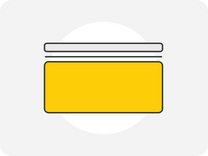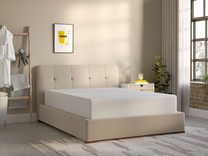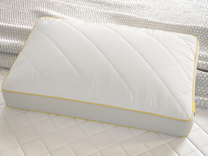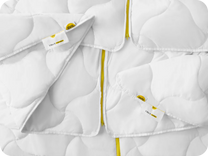If you've ever shared a bed, a room, or possibly even a postcode with someone who suffers from sleep apnoea, then you’ve likely heard the bewildering, sometimes thunderous, but always irregular ‘symphony’ of sounds that can only be described as somewhere between a snore and a sheep getting lost in a thunderstorm.
Sleep apnoea is the condition that turns a peaceful night’s sleep into a chaotic variety show where your airway, for some reason, tries to leave the stage early every few minutes... And if you’re the one with sleep apnoea? Well, let’s just say you’re the star performer in a production you’re not even aware of. How’s that for irony?
what is sleep apnoea anyway?
For those blissfully unfamiliar, sleep apnoea is a sleep disorder that affects millions worldwide (and likely a couple of your neighbours). It’s when breathing is repeatedly interrupted during sleep, often resulting in loud snoring, gasping, or the classic “snort-and-roll” — where the sufferer temporarily wakes with a snort that can make a sleeping partner leap two feet in the air.
It comes in a few varieties, but the most common type is obstructive sleep apnoea (OSA) (1), where the muscles in your throat take a break at the worst possible time. Not that there’s a particularly good time for it to happen, but you know what I mean… Go with it. Jeez!
Central sleep apnoea, on the other hand, is the weirdo cousin of the sleep apnoea world, that involves a disconnect between the brain and the breathing muscles. Think of it as your brain getting too lazy to remind your lungs to do their job. It's like the sleep version of your brain ghosting your lungs, very much leaving them on read. Sad times. The rarest type is complex sleep apnoea, which, as the name suggests, is when you get a bit of both — as if one wasn't complicated enough!? (2)
signs and symptoms (or: is your night a secret stand-up routine?)
The tell-tale signs of sleep apnoea aren’t exactly subtle. Here’s what might tip you off:
-
Snoring so loud it could wake the neighbours’ deaf dog: If you’ve ever woken yourself up by snoring, congratulations (sort of)! You might be an apnoea aficionado. Your nocturnal nasal sounds are turning your bedroom into a hangout spot for people who like industrial noise, firework displays where everything goes off at the same time, and a tea trolley falling down 16 sets of stairs simultaneously…
-
Gasping for breath like a fish out of water: Ever had that dream where you’re being chased by a giant marshmallow only to wake up gasping? That might not just be the marshmallow. It could be sleep apnoea reminding you who’s boss. Yes, like Ghostbusters.
-
Waking up feeling like a sack of potatoes: Let’s be honest: no one wakes up feeling like a Disney character, ready to be dressed by a flock of happy little bluebirds… But if every morning feels like you’ve been hit by a train, it might be more than just that midnight snack habit. Sleep apnoea interrupts your sleep cycles, so your body doesn’t get to enjoy those blissful REM stages. Boo to you sleep apnoea, boo to you!
-
Daytime drowsiness that hits like a brick: If you find yourself nodding off in inappropriate places — meetings, tube rides, Zoom calls with your boss — you might be battling more than boredom.
-
A headache that just won’t quit: The morning headache, a classic sleep apnoea souvenir. It's like your body’s way of saying, “Congrats on breathing terribly all night! Here’s a present!” Except it’s wrapped in sandpaper.
what causes this airway opera?
Well, that’s where things get interesting. A host of factors can contribute to sleep apnoea, including:
-
Weight: Extra tissue around your neck can contribute to airway blockage, so you might be more prone if you’re carrying a little extra “winter weight”.
-
Age: Unfortunately, as we age, our muscles relax — including the ones in your throat that you want to keep open at night. You know? The breathe-y ones.
-
Alcohol: Here’s one downside of that late-night glass of red. Alcohol relaxes muscles, which can make the airway more likely to close up. I know you’re going to pretend you didn’t read this though, so… MOVING ON!
-
Genetics: If snoring runs in the family, congratulations, you’re likely following in the grand tradition of loud sleepers. Another thing to blame your parents for!
-
Sleeping position: Ever heard someone say, “Sleep on your side; it’ll stop your snoring?” Well, turns out they’re not wrong. Sleeping on your back makes it easier for your airway to block. Damn them and their correctness! (3)
diagnosis: the pillow talk you’ll never forget
Diagnosing sleep apnoea is a process that sounds a bit like preparing for a low-budget sci-fi movie. Imagine this: you get sent home with a contraption resembling an ‘80s boombox strapped to your chest and finger clips that would look more at home on a high-stakes heist film than in a sleep clinic. This is your at-home sleep study, where you’ll discover just how often your body decides that breathing is a suggestion rather than a requirement.
For the full experience, you could try the in-clinic sleep study. Think, a night’s stay in a ‘bedroom’ with enough wires to power a small Latin American town, while a machine records your every breath, twitch, and (un)restful sigh. It’s essentially a high-stakes slumber party, except you’re the only one there, and there’s no popcorn or fairy lights, just a kind technician monitoring your vitals like you’re training for astronaut camp. If only.
treatment options (AKA how to keep breathing while sleeping)
So, you’ve been diagnosed with sleep apnoea. What’s next? Well, you’ve got options:
-
CPAP machine: This is the ‘crown jewel’ of sleep apnoea treatment — the Continuous Positive Airway Pressure (CPAP) machine. Picture this: it’s bedtime, you’re all set with a mask that makes you look like Maverick (or iceman if you’re more of a Val Kilmer kinda person), and you’re connected to a machine that pumps pressurised air into your nose. Sure, it’s not the look you’d choose for date night, but hey, at least you’ll sleep. Plus, there are endless opportunities for Darth Vader impressions. Win.
-
Oral appliances: Essentially, a fancy mouthguard that keeps your airway open. It’s like putting your jaw in first gear to stop it from slumping backward. Yes, you’ll look like an off-duty boxer, but it’s less cumbersome than the CPAP, and you can almost pretend it’s trendy.
-
Lifestyle changes: Losing weight, avoiding alcohol before bed, sleeping on your side — all things that sound more like general advice for life, but they’re effective for mild cases.
-
Surgery: Only for the serious cases — because who wouldn’t want to rearrange their insides for a bit of quiet sleep?
living with sleep apnoea: the art of nocturnal negotiation
Living with sleep apnoea is, essentially, an adventure in self-discovery. You’ll learn new terms, like “sleep hygiene” – yes, we are banging that drum…again (spoiler: it’s got nothing to do with how many times you’ve washed your sheets). You’ll pick up tricks like stacking pillows to keep your airway clear, and possibly consider a bedtime yoga routine to calm your airway muscles. It’s all good stuff, honest!
It’s hard to talk about sleep apnoea without mentioning its effect on relationships. Bed-sharing with a sleep apnoea sufferer is, at times, a test of love and patience. Many a partner has shared that they’d give up chocolate forever if it meant a night of quiet, or uttered the words “I love you, but if you don’t do something about your snoring etc etc…”. The sleep-deprived partner becomes an expert in elbow-nudging, subtle pillow adjustments, and even the occasional “are you still breathing?” poke at 3 a.m.
In fact, many couples with sleep apnoea sufferers end up adopting the mythical ‘Sleep Divorce,’ where each partner gets their own bed (and sometimes, own room). Some even credit it with saving their relationship, as they get a full night’s rest in peace.
finding the funny side of sleep apnoea
So, what can we take away from this rollercoaster of a condition? It’s safe to say that sleep apnoea is a special secret society, with a slightly noisy entry requirement; it’s like a backwards nightclub, noisy on the outside, quiet on the inside. While we can laugh about the symphony of snores, gasps, and grumbles, we also know that a proper night’s rest is essential for health and happiness. Also, on a more serious note, it can lead to a variety of health issues, so it’s always better to try and find a fix, if you can. Speaking to your GP is the best option, as they can then refer you to a sleep clinic to get to the bottom of your bothersome breathing.
In the meantime though, if you or a loved one experiences sleep apnoea, consider it a peculiar night time adventure, and embrace the quirks — from your CPAP sidekick to your unintentional midnight one-liners, and jump scares.
Because if there’s one thing we can all agree on, it’s this: life may be short, but sleep should be sweet… and ideally, quiet. Until next time, eve sleep.







